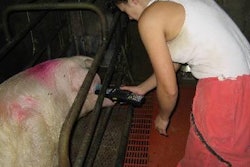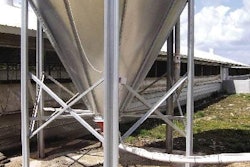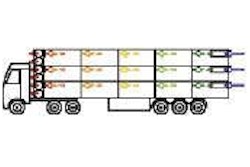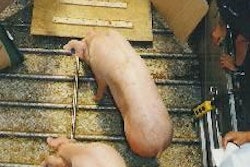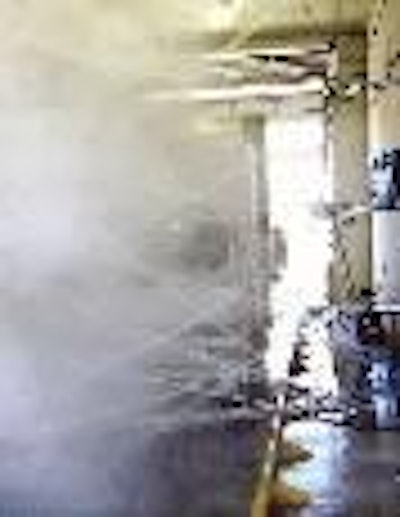
A report in the December 2006 edition of Pig International referred to pioneering work in the USA to produce a risk assessment procedure for determining whether an individual herd was likely to stay free of the porcine reproductive and respiratory syndrome PRRS after having been cleared of the virus. Now close to the stage of having an internet version, the 5-year development process has already started to reveal lessons on the difference between units for their approach to biosecurity.
This aspect has been covered in recent months by remarks to the Iowa Pork Congress and the American Association of Swine Veterinarians by Dr Derald Holtkamp, assistant professor of swine production medicine at Iowa State University's college of veterinary medicine and the association's risk assessment co-ordinator. With his permission, some key points are contained in the following report.
Herds given a health score
We should begin with a reminder that the original epidemiology-based risk assessment strategy regarding PRRS set out to contemplate the many possible ways in which the virus could re-enter a herd that had been cleaned after being infected. The factors would be ranked for relative importance and applied to produce an overall risk score for each herd on its likelihood of suffering a clinical breakdown.
Assembling the necessary information has involved a large-scale exercise of collecting and examining data from many units and veterinarians. By February of this year, Dr Holtkamp has reported, 403 assessments had been submitted to Version 2 of the database, besides the 321 completed using the initial version of the tool. Table 1 lists 340 sites in the assessment database Version 2, by their status for the PRRS virus and type of production. See that the majority of those in the negative or naïve category for PRRSV are listed as being involved in genetics.
Average risk index scores for PRRSV-negative or naïve sites versus those positive for the virus according to their rating on major external risk categories. Not surprisingly, Dr Holthamp notes, the largest difference between them is for risk factors related to the density of other pig units near the site.
Much progress has been made meanwhile in starting to benchmark the individual risk factors specifically in terms of the biosecurity measures practised. Examples on the list point to questions over the cleanliness of vehicles, whether used for transporting animals, materials or people.
Washing frequency compared
To delve more into the transport issue, the chart in Figure 1 compares the practises of the database sites for the frequency with which they have washed the vehicles used to transport breeding pigs. Quite clearly, the PRRSV-positive sites washed the trucks less often. Although the assessors themselves are quick to emphasise that this is only an association and not a demonstration of cause and effect, producers and their advisers will undoubtedly take note of the link when they review their own transport biosecurity measures.
Looking more closely, the benchmarkers examined differences between the 20% of sites with the highest aggregated index score for external risks and the lowest 20%. The indications from this on transport scheduling, set out in Figures 4 + 5, suggest that the negative/naïve sites have been more careful in limiting vehicle usage when moving genetics.
The risk assessment has yielded more general indicators besides the particulars of transportation. It has been found for pork-producing sites in the USA relating to the training they give to their new employees on matters of biosecurity. A number of the enterprises have admitted that they do not train apprentice workers at all in this way.
Again, it cannot be stressed too often that no cause-and-effect relationship is implied here. After all, it could be argued that any site regularly training new employees on biosecurity measures would be more likely also to undertake a project to eliminate the PRRS virus. The people behind the risk assessment insist that we must always be careful not to jump to the wrong conclusion when interpreting the data. In this example it would be quite wrong to assume that the PRRS virus necessarily has more chance of entering those sites defined by an absence of training. What has shown is an association, a piece of information for every herd manager to bear in mind in the constant battle to keep out pathogens.


